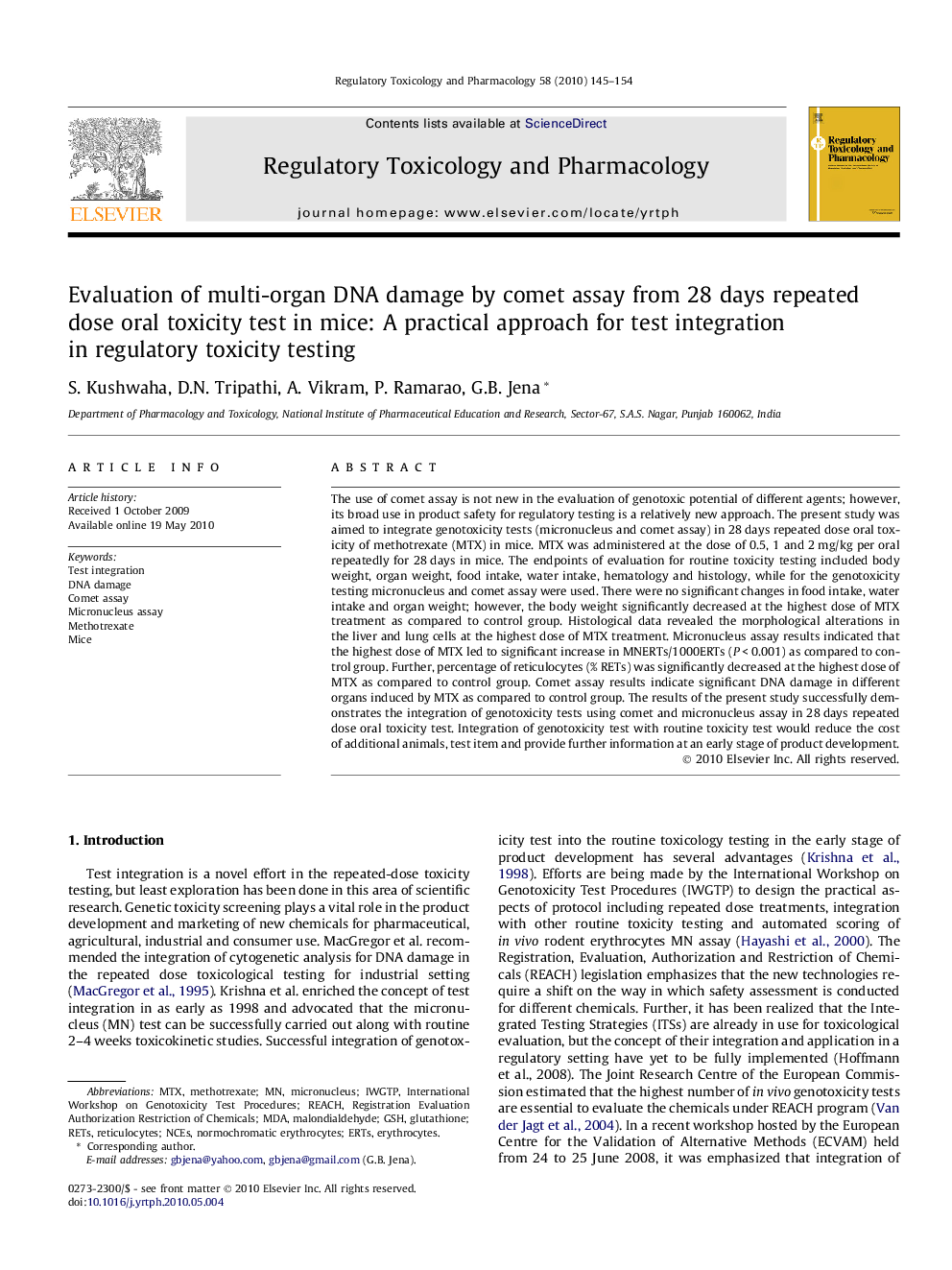| Article ID | Journal | Published Year | Pages | File Type |
|---|---|---|---|---|
| 2592508 | Regulatory Toxicology and Pharmacology | 2010 | 10 Pages |
The use of comet assay is not new in the evaluation of genotoxic potential of different agents; however, its broad use in product safety for regulatory testing is a relatively new approach. The present study was aimed to integrate genotoxicity tests (micronucleus and comet assay) in 28 days repeated dose oral toxicity of methotrexate (MTX) in mice. MTX was administered at the dose of 0.5, 1 and 2 mg/kg per oral repeatedly for 28 days in mice. The endpoints of evaluation for routine toxicity testing included body weight, organ weight, food intake, water intake, hematology and histology, while for the genotoxicity testing micronucleus and comet assay were used. There were no significant changes in food intake, water intake and organ weight; however, the body weight significantly decreased at the highest dose of MTX treatment as compared to control group. Histological data revealed the morphological alterations in the liver and lung cells at the highest dose of MTX treatment. Micronucleus assay results indicated that the highest dose of MTX led to significant increase in MNERTs/1000ERTs (P < 0.001) as compared to control group. Further, percentage of reticulocytes (% RETs) was significantly decreased at the highest dose of MTX as compared to control group. Comet assay results indicate significant DNA damage in different organs induced by MTX as compared to control group. The results of the present study successfully demonstrates the integration of genotoxicity tests using comet and micronucleus assay in 28 days repeated dose oral toxicity test. Integration of genotoxicity test with routine toxicity test would reduce the cost of additional animals, test item and provide further information at an early stage of product development.
